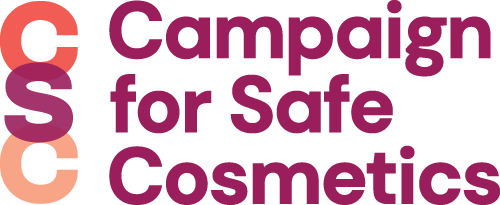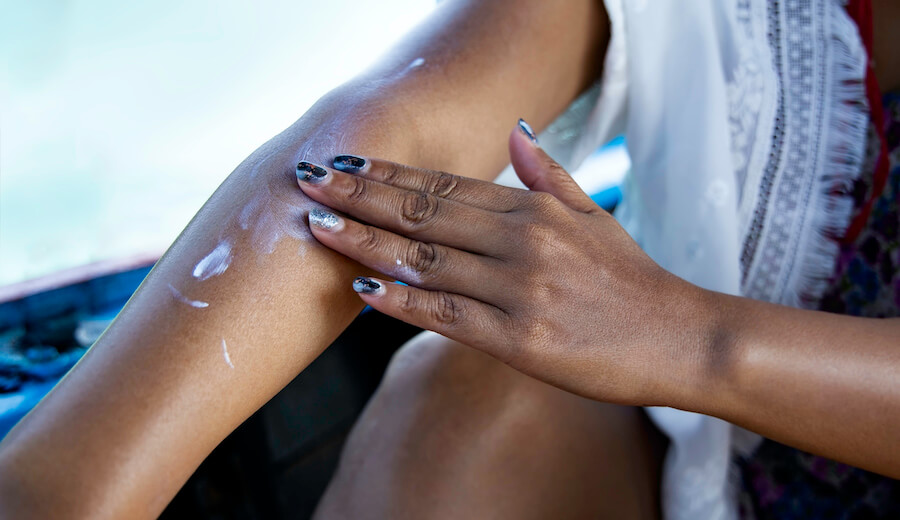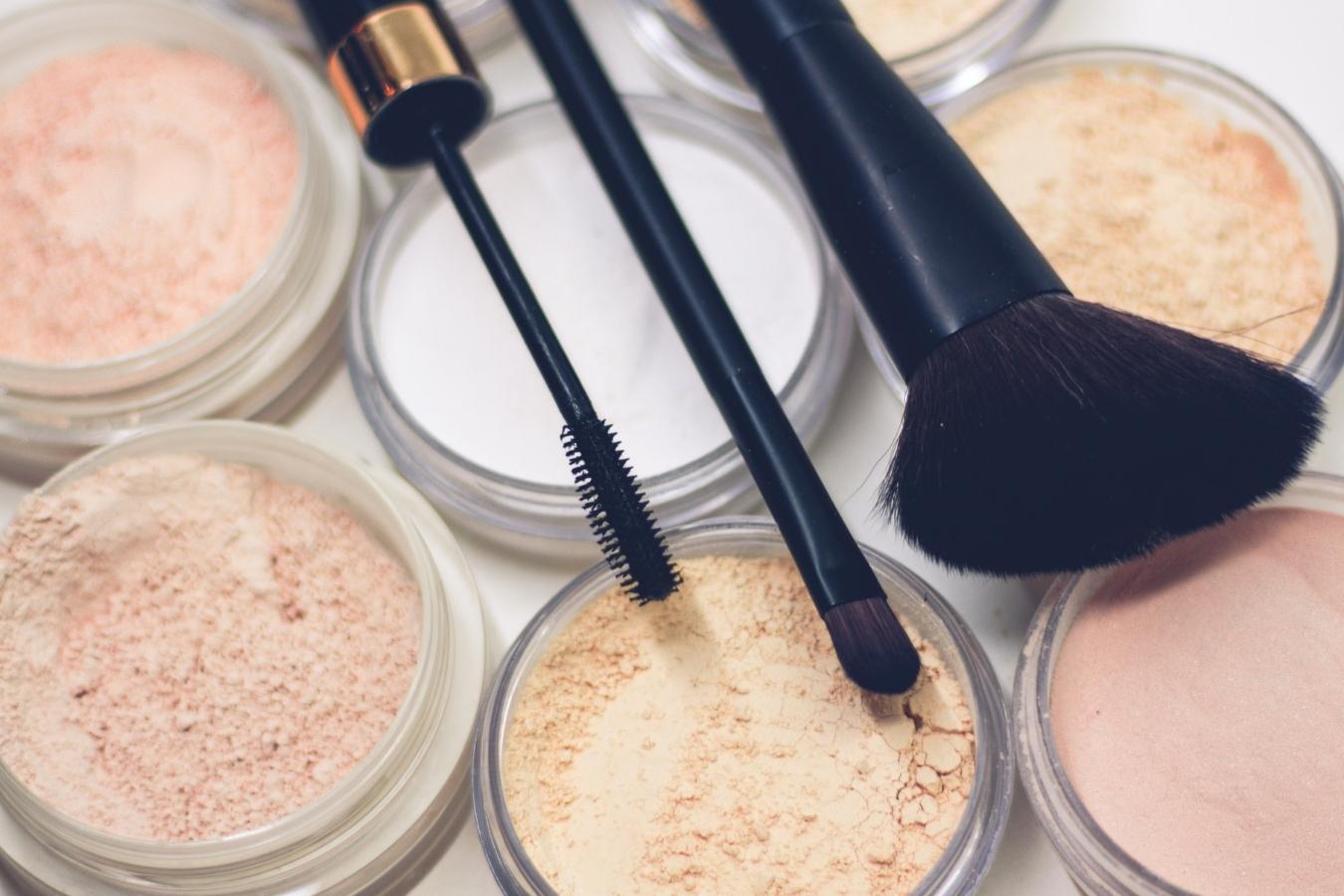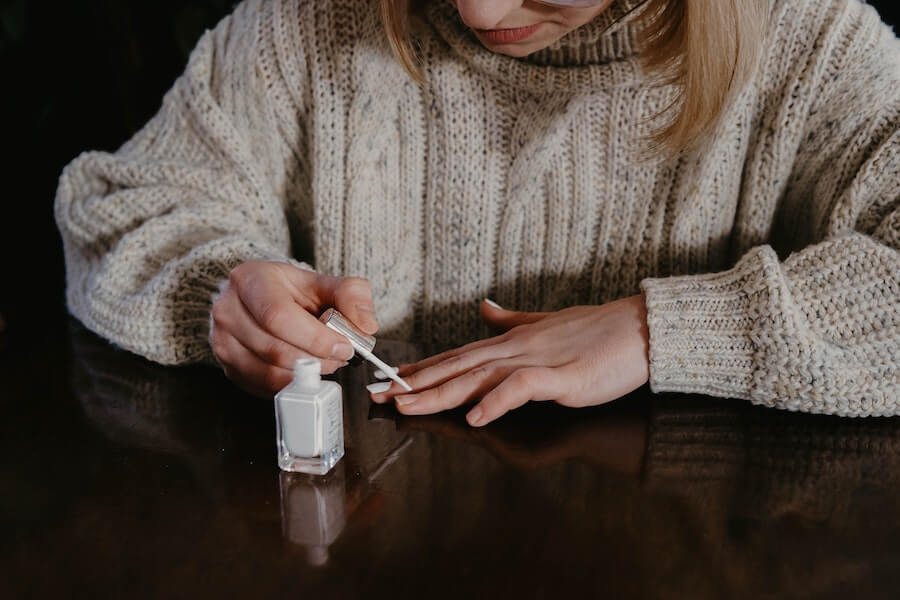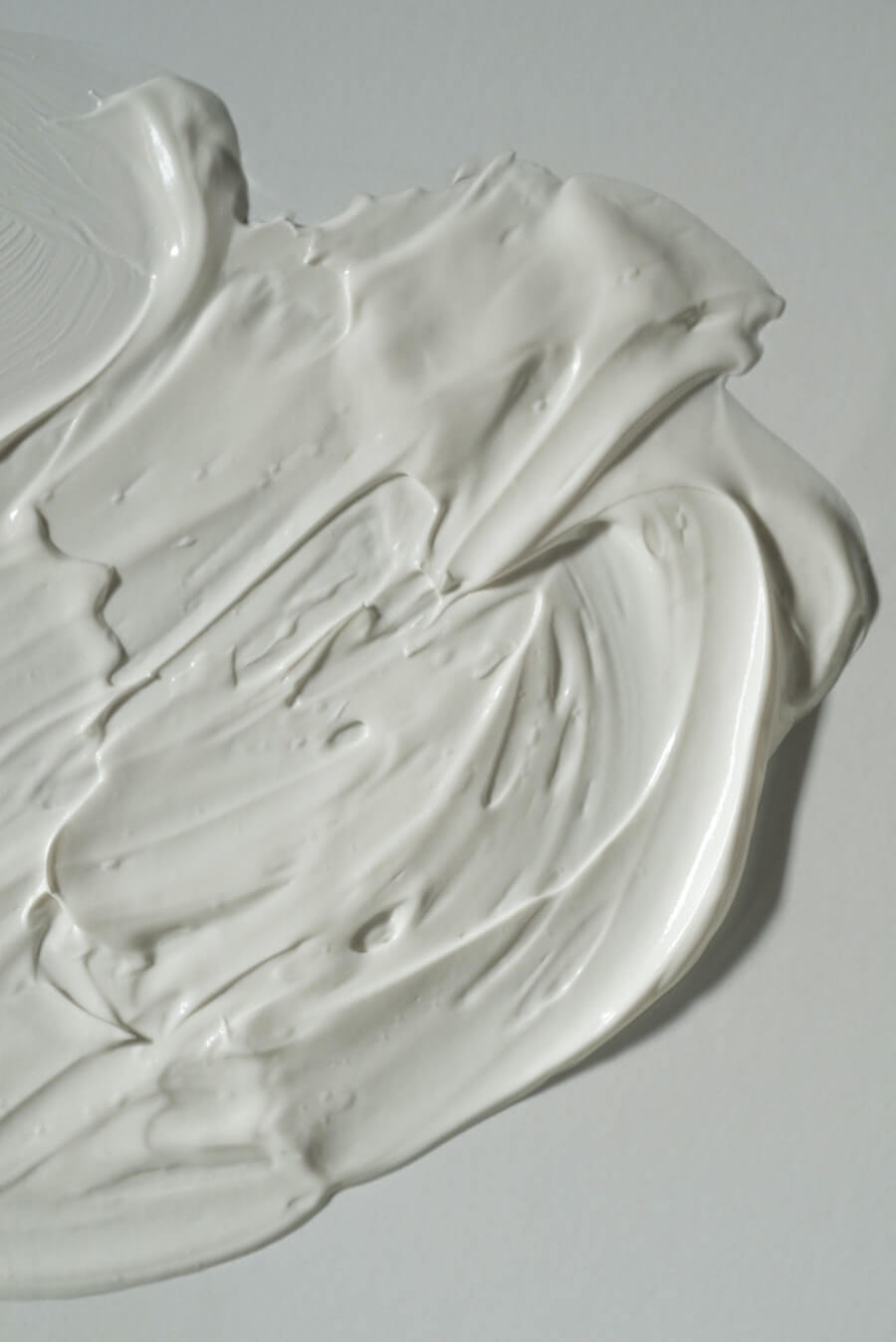[1] Prusakiewicz JJ, Harville HM, Zhang Y, Ackermann C, Voorman RL. Parabens inhibit human skin estrogen sulfotransferase activity: possible link to paraben estrogenic effects. Toxicology. 2007 Apr 11;232(3):248-56.
[2] Ye X., et al., Parabens as urinary biomarkers of exposure in humans. Environmental Health Perspectives, vol. 114, pp 1843-1846, 2006. Available online: https://pubmed.ncbi.nlm.nih.gov/17185273/. Accessed April 22, 2022.
[3] Lv, C., Hou, J., Xie, W., & Cheng, H. (2015). Investigation on formaldehyde release from preservatives in cosmetics. International journal of cosmetic science.
[4] Engel C, Nudelman MA, Rasanayagam S, Witte M. Pretty Scary 2 Unmasking toxic chemicals in kids’ makeup. Campaign for Safe Cosmetics. 2016 Oct. Available online: http://www.safecosmetics.org/wp-content/uploads/2016/10/Pretty-Scary_2016.pdf. Accessed April 22, 2022.
[5] Harley KG, Kogut K, Madrigal DS, Cardenas M, Vera I, Meza-Alfaro G, She J, Gavin Q, Zahedi R, Bradman A, Eskenazi B. Reducing phthalate, paraben, and phenol exposure from personal care products in adolescent girls: Findings from the HERMOSA intervention study. Environ. Health Perspect. 2016 Mar 7.
[6] Darbre PD, Harvey PW. Paraben esters: review of recent studies of endocrine toxicity, absorption, esterase and human exposure, and discussion of potential human health risks. Journal of applied toxicology. 2008 Jul 1;28(5):561-78.
[7] Darbre PD, Harvey PW. Paraben esters: review of recent studies of endocrine toxicity, absorption, esterase and human exposure, and discussion of potential human health risks. Journal of applied toxicology. 2008 Jul 1;28(5):561-78.
[8] Prusakiewicz JJ, Harville HM, Zhang Y, Ackermann C, Voorman RL. Parabens inhibit human skin estrogen sulfotransferase activity: possible link to paraben estrogenic effects. Toxicology. 2007 Apr 11;232(3):248-56.
[9] Oishi S. Lack of spermatotoxic effects of methyl and ethyl esters of p-hydroxybenzoic acid in rats. Food and chemical toxicology. 2004 Nov 30;42(11):1845-9.
[10] Taxvig C, Vinggaard AM, Hass U, Axelstad M, Boberg J, Hansen PR, Frederiksen H, Nellemann C. Do parabens have the ability to interfere with steroidogenesis?. Toxicological sciences. 2008 Nov 1;106(1):206-13.
[11] Oishi S. Effects of butylparaben on the male reproductive system in rats. Toxicology and Industrial Health. 2001 Feb 1; 17(1): 31-9.
[12] Oishi S. Effects of butylparaben on the male reproductive system in rats. Toxicology and Industrial Health. 2001 Feb 1; 17(1): 31-9.
[13] Taxvig C, Vinggaard AM, Hass U, Axelstad M, Boberg J, Hansen PR, Frederiksen H, Nellemann C. Do parabens have the ability to interfere with steroidogenesis?. Toxicological sciences. 2008 Nov 1;106(1):206-13.
[14] Darbre PD., et a., Paraben esters: review of recent studies of endocrine toxicity, absorption, esterase and human exposure, and discussion of potential human health risks. Journal of Applied Toxicology, 2008.
[15] Ishiwatari S., et al., Effects of methyl paraben on skin keratinocytes. J. Appl. Toxicol, vol 27, pp 1-9.
[16] TEDX The Edocrine Disruption Exchange. List of Potential Endocrine Disruptors. Ethylparaben. 2016. Available online: http://endocrinedisruption.org/endocrine-disruption/tedx-list-of-potential-endocrine-disruptors/chemicalsearch?sname=&x=0&y=0&action=search&sall=1&searchfor=any&scas=120-47-8&searchcats=all. Accessed April 22, 2022.
[17] Taxvig C, Vinggaard AM, Hass U, Axelstad M, Boberg J, Hansen PR, Frederiksen H, Nellemann C. Do parabens have the ability to interfere with steroidogenesis?. Toxicological sciences. 2008 Nov 1;106(1):206-13.
[18] Kawaguchi M., et al., Maternal isobutyl-paraben exposure decreased the plasma corticosterone level in dams and sensitivity to estrogen in female offspring rats. J. Vet. Med. Sci., vol. 71, no. 8, pp 1027-33, 2009.
[19] NTP (National Toxicology Program). 2014. Report on Carcinogens, Thirteenth Edition. Research Triangle Park, NC: U.S. Department of Health and Human Services, Public Health Service. Available online: http://ntp.niehs.nih.gov/pubhealth/roc/roc13/. Accessed April 22, 2022.
[20] IARC Monographs on the Evaluation of Carcinogenic Risks to Humans: Chemical Agents and Related Occupations, Volume 100F, International Agency for Research on Cancer, 2012.
[21] EWG: Environmental Working Group. EWG’s Skin Deep Cosmetic Database. DMDM Hydantoin (formaldehyde releaser). Available online: https://www.ewg.org/skindeep/ingredient/702196/DMDM_HYDANTOIN_(FORMALDEHYDE_ RELEASER)/. Accessed April 22, 2022.
[22] Lv C, Hou J, Xie W, Cheng H. Investigation on formaldehyde release from preservatives in cosmetics. International journal of cosmetic science. 2015 Oct 1;37(5):474-8.
[23] Imidazolidinyl Urea. Available Online: http://www.ewg.org/skindeep/ingredient/703119/IMIDAZOLIDINYL_ UREA_%28FORMALDEHYDE_RELEASER%29/. Accessed April 22, 2022.
[24] Becker, L. C., Bergfeld, W. F., Belsito, D. V., Klaassen, C. D., Hill, R., Leibler, D., … & Andersen, F. A. (2010). Final report of the amended safety assessment of quaternium-15 as used in cosmetics. International journal of toxicology, 29(3 suppl), 98S-114S.
[25] Becker, L. C., Bergfeld, W. F., Belsito, D. V., Klaassen, C. D., Hill, R., Leibler, D., … & Andersen, F. A. (2010). Final report of the amended safety assessment of quaternium-15 as used in cosmetics. International journal of toxicology, 29(3 suppl), 98S-114S.
[26] TEDX The Edocrine Disruption Exchange. List of Potential Endocrine Disruptors. Bronopol. 2016. Available online: http://endocrinedisruption.org/endocrine-disruption/tedx-list-of-potential-endocrine-disruptors/chemicalsearch?sname=bronopol&x=0&y=0&action=search&sall=1&searchfor=any&scas=&searchcats=all. Accessed April 22, 2022.
[27] ECHA: European Chemicals Agency. Substance information. Bronopol. Available online: https://echa.europa.eu/en/substance-information/-/substanceinfo/100.000.131#TRADE_NAMEScontainer. Accessed April 22, 2022.
[28] Haz-map. Bronopol. Available online: https://haz-map.com/Agents/1010. Accessed April 22, 2022.
[29] Stejskal VD, Forsbeck M, Nilsson R. Lymphocyte transformation test for diagnosis of isothiazolinone allergy in man. Journal of investigative dermatology. 1990 May 31;94(6):798-802.
[30] De Groot A, Herxheimer A. Isothiazolinone preservative: cause of a continuing epidemic of cosmetic dermatitis. The Lancet. 1989 Feb 11;333(8633):314-6.
[31] Lundov, M. D., Krongaard, T., Menné, T. L., & Johansen, J. D. (2011). Methylisothiazolinone contact allergy: a review. British Journal of Dermatology, 165(6), 1178-1182.
[32] Rohm & Haas (2002). Acute Inhalation toxicity study in rate (methylisothiazolinone 53.52% active ingredient). Rohm & Haas Chemicals, LLC Report, 06R-1002.
[33] NIOSH: National Institute for Occupational Safety and Health. Methylchloroisothiazinone Guidelines. Accessed Online: https://www.cir-safety.org/sites/default/files/MI_MCI.pdf. Accessed April 22, 2022.
[34] Lundov, M. D., Krongaard, T., Menné, T. L., & Johansen, J. D. (2011). Methylisothiazolinone contact allergy: a review. British Journal of Dermatology, 165(6), 1178-1182.
[35] Burnett, C. L., Bergfeld, W. F., Belsito, D. V., Klaassen, C. D., Marks, J. G., Shank, R. C., … & Andersen, F. A. (2010). Final report of the safety assessment of methylisothiazolinone. International journal of toxicology, 29(4 suppl), 187S-213S.
[36] Charles AK, Darbre PD. Oestrogenic activity of benzyl salicylate, benzyl benzoate and butylphenylmethylpropional (Lilial) in MCF7 human breast cancer cells in vitro. Journal of Applied Toxicology. 2009 Jul 1;29(5):422-34.
[37] NLM. Benzyl Benzoate. PubChem. Available online: https://pubchem.ncbi.nlm.nih.gov/compound/2345#section=Solubility. Accessed April 22, 2022.
[38] Nair B. Final report on the safety assessment of Benzyl Alcohol, Benzoic Acid, and Sodium Benzoate. International journal of toxicology. 2000 Dec;20:23-50.
[39] CDC Pockeet Guide to Chemicals. NIOSH. Benzyl Alcohol. Available online: https://www.cdc.gov/niosh/npg/npgd0053.html. Accessed April 22, 2022.
[40] Purohit A, Kopferschmitt-Kubler MC, Moreau C, Popin E, Blaumeiser M, Pauli G. Quaternary ammonium compounds and occupational asthma. International archives of occupational and environmental health. 2000 Aug 1;73(6):423-7.
[41] CDC: Center for Disease Control and Prevention. NIOSH. Benzalkonium Chloride. Available online: https://www.cdc.gov/niosh/topics/asthma/exposures.html. Accessed April 22, 2022.
[42] NIH. National Library of Medicine. Citric Acid. Available online: https://pubchem.ncbi.nlm.nih.gov/compound/Citric-acid. Accessed April 22, 2022.
[43] Ricciardolo FL, Rado V, Fabbri LM, Sterk PJ, Di Maria GU, Geppetti P. Bronchoconstriction induced by citric acid inhalation in guinea pigs: role of tachykinins, bradykinin, and nitric oxide. American journal of respiratory and critical care medicine. 1999 Feb 1;159(2):557-62.
[44] HazMap. National Institute of Health. Citric Acid. Available online: https://haz-map.com/Agents/12560. Accessed April 22, 2022.
[45] HazMap. National Institute of Health. Dehydroacetic acid. Available online: https://www.haz-map.com/Agents/4673. Accessed April 22, 2022.
[46] Sakaguchi Y, Suga S, Oshida K, Miyamoto‐Kuramitsu K, Ueda K, Miyamoto Y. Anticoagulant effect of sodium dehydroacetate (DHA‐S) in rats. Journal of Applied Toxicology. 2008 May 1;28(4):524-9.
[47] California Proposition 65. Office of Environmental Health Hazard Assessment, 2015. Available online: http://oehha.ca.gov/prop65/prop65_list/Newlist.html. Accessed April 22, 2022.
[48] National Toxicology Program. NTP Technical Report on the Toxicology and Carcinogenesis Studies of pulegone in F344/N Rats and B6C3F1 Mice. National Institute of Health, 2011. Available online: http://ntp.niehs.nih.gov/ntp/htdocs/lt_rpts/tr563.pdf. Accessed April 22, 2022.
[49] Henley D, Lipson N, Korach K, Bloch C. Prepubertal gynecomastia linked to lavender and tea tree oils. New England Journal of Medicine, vol. 356, pp 479-485, 2007.
[50] Dodson R, Nishioka M, Standley L, Perovich L, Brody J, Rudel R. Endocrine disruptors and asthma-associated chemicals in consumer products. Environ Health Perspect, vol. 120, no. 7, pp 935-943, 2012. Available online: http://www.ncbi.nlm.nih.gov/pmc/articles/PMC3404651/. Accessed April 22, 2022.
[51] NTP: National Toxicology Program. Report on Carcinogens, Fourteenth Edition. Methyleugenol. Available online: https://ntp.niehs.nih.gov/ntp/roc/content/profiles/methyleugenol.pdf. Accessed April 22, 2022.
[52] IARC: International Agency for Research on Cancer. Monographs. Methyleugenol. Available online: http://monographs.iarc.fr/ENG/Classification/ClassificationsAlphaOrder.pdf. Accessed April 22, 2022.
[53] OEHHA: Office of Environmental Health Hazard Assessment. California Proposition 65 List of known carcinogens and reproductive toxicants. Methyleugenol. Available online: http://oehha.ca.gov/proposition-65/chemicals/methyleugenol. Accessed April 22, 2022.
[54] von Woedtke T, Schlüter B, Pflegel P, Lindequist U, Jülich WD. Aspects of the antimicrobial efficacy of grapefruit seed extract and its relation to preservative substances contained. Die Pharmazie. 1999 Jun;54(6):452-6.
[55] Takeoka G, Dao L, Wong RY, Lundin R, Mahoney N. Identification of benzethonium chloride in commercial grapefruit seed extracts. Journal of agricultural and food chemistry. 2001 Jul 16;49(7):3316-20.
[56] Goodman LS, Gilman A. The Pharmacological Basis of Therapeutics,(5thedn) McMillan Press. New York, USA. 1975.
[57] Budavari S. Marck Index: An Encyclopedia of Chemicals, Drugs and Biologicals: Encyclopedia of Chemicals Drugs and Biologicals. Merck & Company; 1989.
[58] CDC: Centers for Disease Control and Prevention. NIOSH. Lactic Acid. Available online: https://www.cdc.gov/niosh/npg/npgd0082.html. Accessed April 22, 2022.
[59] HazMap. National Institute of Health. Lactic Acid. Available online: https://haz-map.com/Agents/1416. Accessed April 22, 2022.
[60] HazMap. National Institute of Health. Levulinic acid. Available online: https://haz-map.com/Agents/21110. Accessed April 22, 2022.
[61] Bohn, S., & Bircher, A. J. (2001). Phenoxyethanol‐induced urticaria. Allergy, 56(9), 922-923.
[62] Chasset, F., Soria, A., Moguelet, P., Mathian, A., Auger, Y., Francès, C., & Barete, S. (2015). Contact dermatitis due to ultrasound gel: A case report and published work review. The Journal of dermatology.
[63] Bohn, S., & Bircher, A. J. (2001). Phenoxyethanol‐induced urticaria. Allergy, 56(9), 922-923
[64] HazMap. National Institute of Health. Potassium Sorbate. Available online: https://haz-map.com/Agents/6820. Accessed April 22, 2022.
[65] Fisher AA. Cutaneous reactions to sorbic acid and potassium sorbate. Cutis. 1980 Apr;25(4):350-2.
[66] Sakaguchi Y, Suga S, Oshida K, Miyamoto‐Kuramitsu K, Ueda K, Miyamoto Y. Anticoagulant effect of sodium dehydroacetate (DHA‐S) in rats. Journal of Applied Toxicology. 2008 May 1;28(4):524-9.
[67] Nannini LJ, Hofer D. Effect of inhaled magnesium sulfate on sodium metabisulfite-induced bronchoconstriction in asthma. CHEST Journal. 1997 Apr 1;111(4):858-61.
[68] García‐Gavín J, Parente J, Goossens A. Allergic contact dermatitis caused by sodium metabisulfite: a challenging allergen. A case series and literature review. Contact dermatitis. 2012 Nov 1;67(5):260-9.
[69] Madan V, Walker SL, Beck MH. Sodium metabisulfite allergy is common but is it relevant?. Contact Dermatitis. 2007 Sep 1;57(3):173-6.
[70] Bingham E, Cohrssen B, Powell CH. Patty’s toxicology. Volume 2: toxicological issues related to metals, neurotoxicology and radiation metals and metal compounds. John Wiley and Sons; 2001.
[71] TEDX The Edocrine Disruption Exchange. List of Potential Endocrine Disruptors. Triclocarban. 2016. Available online: http://endocrinedisruption.org/endocrine-disruption/tedx-list-of-potential-endocrine-disruptors/chemicalsearch?sname=triclocarban&x=0&y=0&action=search&sall=1&searchfor=any&scas=&searchcats=all. Accessed April 22, 2022.
[72] Chen J, Ahn KC, Gee NA, Ahmed MI, Duleba AJ, Zhao L, Gee SJ, Hammock BD, Lasley BL. Triclocarban enhances testosterone action: a new type of endocrine disruptor?. Endocrinology. 2008 Mar;149(3):1173-9.
[73] NIH: National Institute of Health. Haz-Map. Triclocarban. Available online: https://haz-map.com/Agents/8083. Accessed April 22, 2022.
[74] Chen J, Ahn KC, Gee NA, Ahmed MI, Duleba AJ, Zhao L, Gee SJ, Hammock BD, and Lasley BL. “Triclocarban enhances testosterone action: a new type of endocrine disruptor?” Endocrinology. 2008 Mar;149(3):1173-9. Print.
[75] Huang H, Du G, Zhang W, Hu J, Wu D, Song L, Xia Y, and Wang X. “The in vitro estrogenic activities of triclosan and triclocarban.” J Appl Toxicol. 2014 Sep;34(9):1060-7. Print.
[76] Zorrilla L, Gibson EK, Jeffay SC, Crofton KM, Setzer Wr, Cooper RL, and Stoker TE. “The effects of Triclosan on Puberty and Thyroid Hormones in Male Wistar Rats.” 107(1) 56-64. Print.
[77] Ahn KC, Zhao B, Chen J, Cherednichenko G, Sanmarti E, Denison MS, Lasley B, Pessah IN, Kültz D, Chang DP, Gee SJ, Hammock BD. “In vitro biologic activities of the antimicrobials triclocarban, its analogs, and triclosan in bioassay screens: receptor-based bioassay screens.” Environ Health Perspect. 2008 Sep;116(9):1203-10. Print.
[78] Heath R, Li J, Roland GE, and Rock CO. “Inhibition of Staphylococcus aureus NADPH-dependent enoyl-acyl carrier protein reductase by triclosan and hexachlorophene.” Journal of Biological Chemistry. 275: 4654-9. Print.
[79] Aiello AE, Marshall B, Levy SB, Della-Latta P, Lin SX, and Larson E. “Antibacterial Cleaning Products and Drug Resistance.” Emerging Infectious Diseases. 11(10): 1565–1570. Print.
[80] Chalew TE and Halden RU. “Environmental Exposure of Aquatic and Terrestrial Biota to Triclosan and Triclocarban.” J Am Water Works Assoc. 2009;45(1):4-13. Print.
[81] Adolfsson-Erici M, Pettersson M, Parkkonen J, and Sturve J. “Triclosan, a commonly used bactericide found in human milk and in the aquatic environment in Sweden.” Chemosphere. 46(9-10):1485-9. Print.
[82] Nitta Y, Kamiya K, Tanimoto M, Sadamoto S, Niwa O, Yokoro K. Induction of transplantable tumors by repeated subcutaneous injections of natural and synthetic vitamin E in mice and rats. Japanese journal of cancer research. 1991 May 1;82(5):511-7.
[83] Constantinides P, Harkey M. Initiation of a transplantable fibrosarcoma by the synergism of two non-initiators, alpha-tocopherol and soya oil. Virchows Archiv A. 1985 Sep 1;405(3):285-97.
[84] Klein EA, Thompson IM, Tangen CM, Crowley JJ, Lucia MS, Goodman PJ, Minasian LM, Ford LG, Parnes HL, Gaziano JM, Karp DD. Vitamin E and the risk of prostate cancer: the Selenium and Vitamin E Cancer Prevention Trial (SELECT). Jama. 2011 Oct 12;306(14):1549-56.
[85] Goka K. Embryotoxicity of zinc pyrithione, an antidandruff chemical, in fish. Environmental research. 1999 Jul 31;81(1):81-3.
[86] Scientific Committee on Cosmetic Products and Non-food Products. Opinion concerning a clarification on the formaldehyde and para-formaldehyde entry in Directive 76/768/EEC on cosmetic products. Opinion: European Commission. 2002. Available Online: http://eur-lex.europa.eu/legal-content/EN/TXT/?uri=CELEX:32009R1223. Accessed April 22, 2022.
[87] Other uses of formaldehyde have different restrictions in Canada. Canada’s Cosmetic Ingredient Hotlist Available Online: www.hc-sc.gc.ca/cps-spc/person/cosmet/info-ind-prof/_hot-list-critique/hotlist-liste_1-eng.php.
[88] Salvador A, Chisvert A, editors. Analysis of cosmetic products. Elsevier; 2011 Aug 11.
[89] Danish Ministry of the Environment-Environmental Protection Agency. Statutory order on restriction on import, sale and use of certain parabens in cosmetic products for children under 3 years. Available online: http://eng.mst.dk/media/mst/Attachments/Engelskparabenbekendtgrelse.pdf. Accessed April 22, 2022.
[90] FDA: U.S. Food and Drug Administration. Parabens in Cosmetics. 2016. Available online: http://www.fda.gov/Cosmetics/ProductsIngredients/Ingredients/ucm128042.htm. Accessed April 22, 2022.
